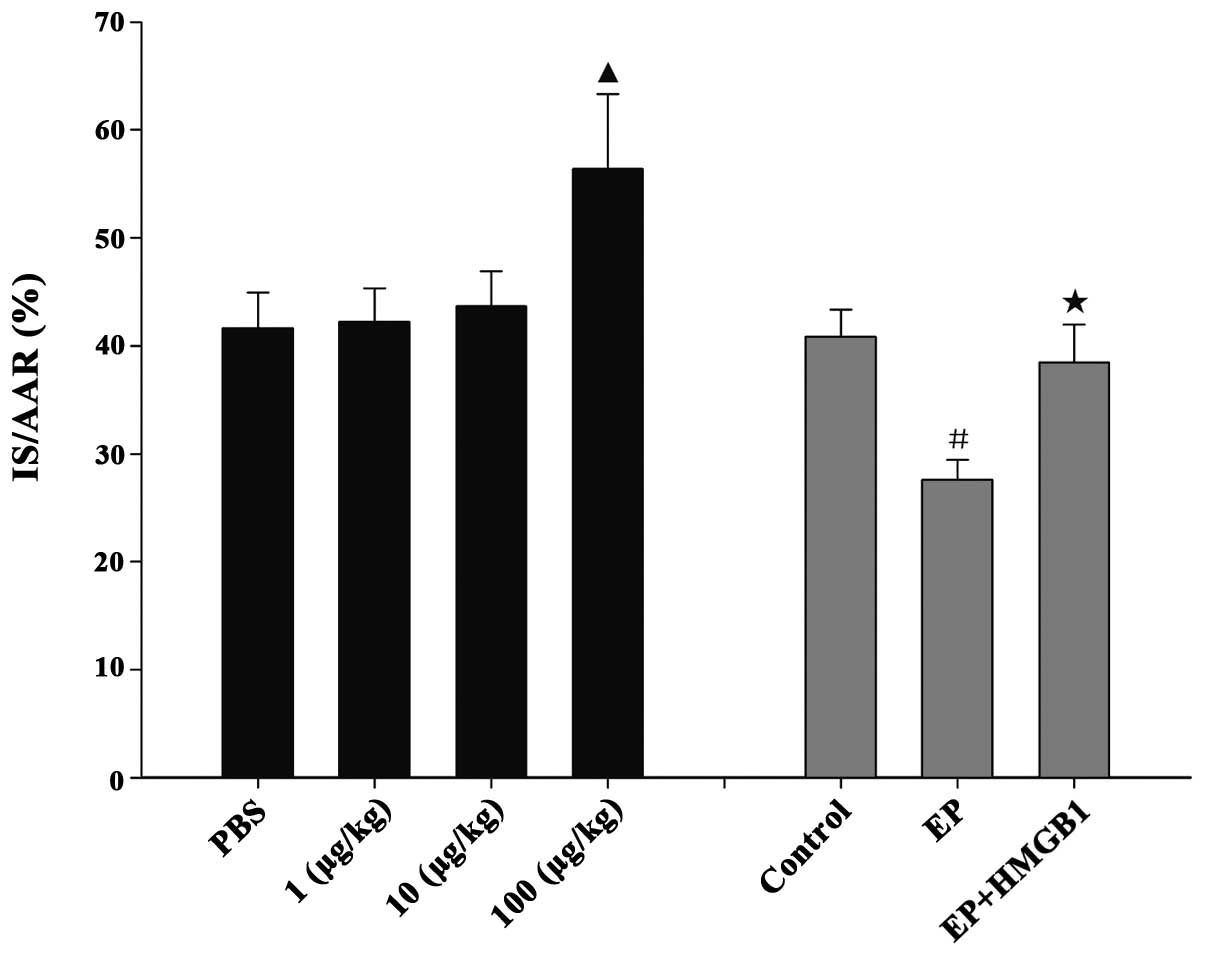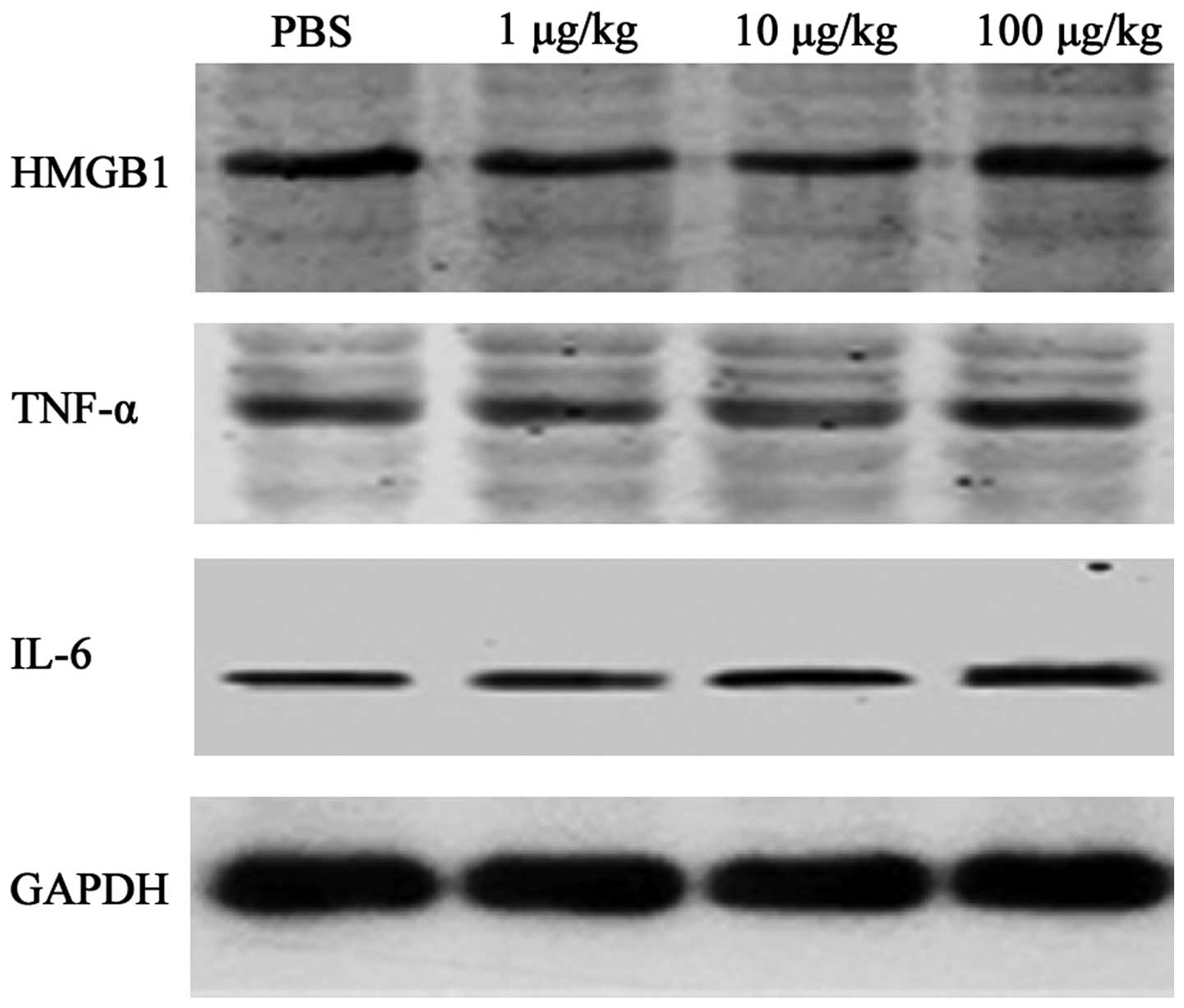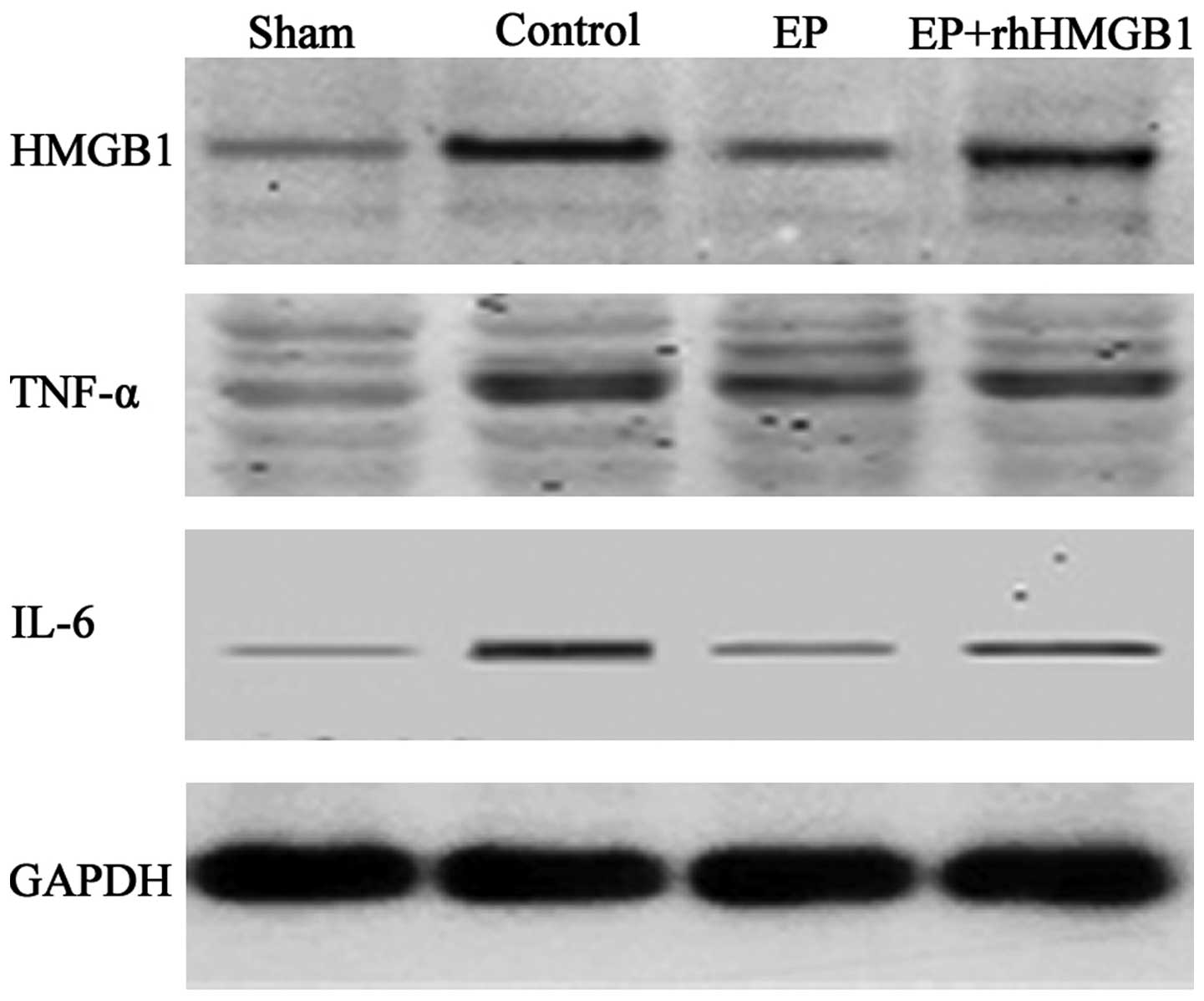|
1
|
Yellon DM and Hausenloy DJ: Myocardial
reperfusion injury. N Engl J Med. 357:1121–1135. 2007. View Article : Google Scholar : PubMed/NCBI
|
|
2
|
Dirksen MT, Laarman GJ, Simoons ML and
Duncker DJ: Reperfusion injury in humans: a review of clinical
trials on reperfusion injury inhibitory strategies. Cardiovasc Res.
74:343–355. 2007. View Article : Google Scholar : PubMed/NCBI
|
|
3
|
Klune JR, Dhupar R, Cardinal J, Billiar TR
and Tsung A: HMGB1: endogenous danger signaling. Mol Med.
14:476–484. 2008. View Article : Google Scholar : PubMed/NCBI
|
|
4
|
Hu X, Xu W and Jiang H: HMGB1/IL-17A axis:
an important mechanism for myocardial ischemia-reperfusion injury.
Int J Cardiol. 174:447–448. 2014. View Article : Google Scholar : PubMed/NCBI
|
|
5
|
Ding HS, Yang J, Chen P, et al: The
HMGB1-TLR4 axis contributes to myocardial ischemia/reperfusion
injury via regulation of cardiomyocyte apoptosis. Gene.
527:389–393. 2013. View Article : Google Scholar : PubMed/NCBI
|
|
6
|
Andrassy M, Volz HC, Igwe JC, et al:
High-mobility group box-1 in ischemia-reperfusion injury of the
heart. Circulation. 117:3216–3226. 2008. View Article : Google Scholar : PubMed/NCBI
|
|
7
|
Tsung A, Kaizu T, Nakao A, et al: Ethyl
pyruvate ameliorates liver ischemia-reperfusion injury by
decreasing hepatic necrosis and apoptosis. Transplantation.
79:196–204. 2005. View Article : Google Scholar : PubMed/NCBI
|
|
8
|
Ulloa L, Ochani M, Yang H, et al: Ethyl
pyruvate prevents lethality in mice with established lethal sepsis
and systemic inflammation. Proc Natl Acad Sci USA. 99:12351–12356.
2002. View Article : Google Scholar : PubMed/NCBI
|
|
9
|
Rabadi MM, Ghaly T, Goligorksy MS and
Ratliff BB: HMGB1 in renal ischemic injury. Am J Physiol Renal
Physiol. 303:F873–F885. 2012. View Article : Google Scholar : PubMed/NCBI
|
|
10
|
Shen M, Lu J, Dai W, et al: Ethyl pyruvate
ameliorates hepatic ischemia-reperfusion injury by inhibiting
intrinsic pathway of apoptosis and autophagy. Mediators Inflamm.
2013:4615362013.
|
|
11
|
Fryer RM, Hsu AK, Eells JT, Nagase H and
Gross GJ: Opioid-induced second window of cardioprotection:
potential role of mitochondrial KATP channels. Circ Res.
84:846–851. 1999. View Article : Google Scholar : PubMed/NCBI
|
|
12
|
Rouhiainen A, Tumova S, Valmu L, Kalkkinen
N and Rauvala H: Pivotal advance: analysis of proinflammatory
activity of highly purified eukaryotic recombinant HMGB1
(amphoterin). J Leukoc Biol. 81:49–58. 2007. View Article : Google Scholar
|
|
13
|
Scaffidi P, Misteli T and Bianchi ME:
Release of chromatin protein HMGB1 by necrotic cells triggers
inflammation. Nature. 418:191–195. 2002. View Article : Google Scholar : PubMed/NCBI
|
|
14
|
Yang R, Gallo DJ, Baust JJ, et al: Ethyl
pyruvate modulates inflammatory gene expression in mice subjected
to hemorrhagic shock. Am J Physiol Gastrointest Liver Physiol.
283:G212–G221. 2002. View Article : Google Scholar : PubMed/NCBI
|
|
15
|
O’Connor KA, Hansen MK, Rachal Pugh C, et
al: Further characterization of high mobility group box 1 (HMGB1)
as a proinflammatory cytokine: central nervous system effects.
Cytokine. 24:254–265. 2003. View Article : Google Scholar
|
|
16
|
Tsung A, Sahai R, Tanaka H, et al: The
nuclear factor HMGB1 mediates hepatic injury after murine liver
ischemia-reperfusion. J Exp Med. 201:1135–1143. 2005. View Article : Google Scholar : PubMed/NCBI
|
|
17
|
Chung KY, Park JJ and Kim YS: The role of
high-mobility group box-1 in renal ischemia and reperfusion injury
and the effect of ethyl pyruvate. Transplant Proc. 40:2136–2138.
2008. View Article : Google Scholar : PubMed/NCBI
|
|
18
|
Yu YM, Kim JB, Lee KW, Kim SY, Han PL and
Lee JK: Inhibition of the cerebral ischemic injury by ethyl
pyruvate with a wide therapeutic window. Stroke. 36:2238–2243.
2005. View Article : Google Scholar : PubMed/NCBI
|
|
19
|
Woo YJ, Taylor MD, Cohen JE, et al: Ethyl
pyruvate preserves cardiac function and attenuates oxidative injury
after prolonged myocardial ischemia. J Thorac Cardiovasc Surg.
127:1262–1269. 2004. View Article : Google Scholar : PubMed/NCBI
|
|
20
|
Guo J, Zhang K, Ji Y, Jiang X and Zuo S:
Effects of ethyl pyruvate on myocardial apoptosis and expression of
Bcl-2 and Bax proteins after ischemia-reperfusion in rats. J
Huazhong Univ Sci Technolog Med Sci. 28:281–283. 2008. View Article : Google Scholar : PubMed/NCBI
|
|
21
|
Wang Q, Ding Q, Zhou Y, et al: Ethyl
pyruvate attenuates spinal cord ischemic injury with a wide
therapeutic window through inhibiting high-mobility group box 1
release in rabbits. Anesthesiology. 110:1279–1286. 2009. View Article : Google Scholar : PubMed/NCBI
|
|
22
|
Zhang M and Chen L: Status of cytokines in
ischemia reperfusion induced heart injury. Cardiovasc Hematol
Disord Drug Targets. 8:161–172. 2008. View Article : Google Scholar : PubMed/NCBI
|

















